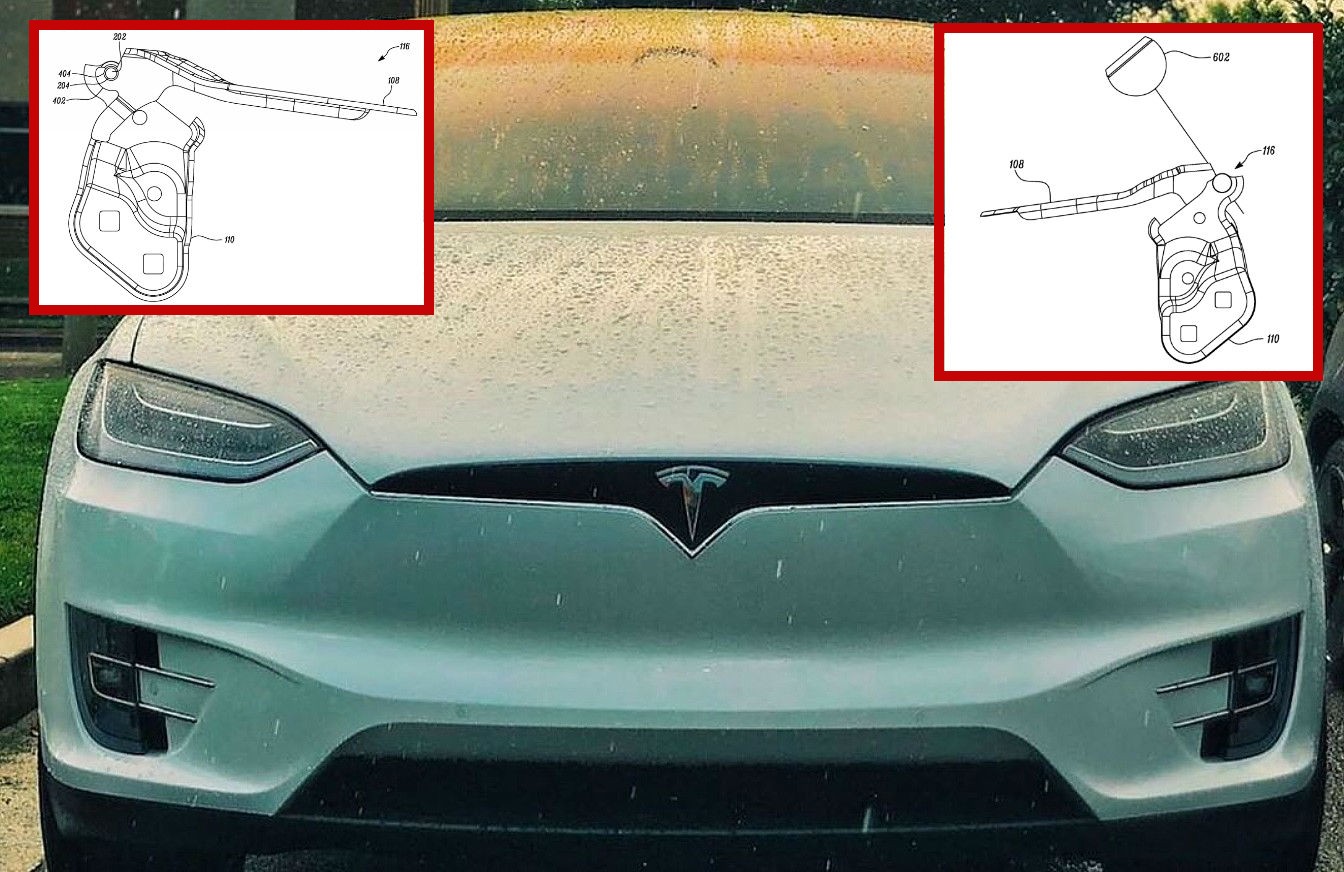
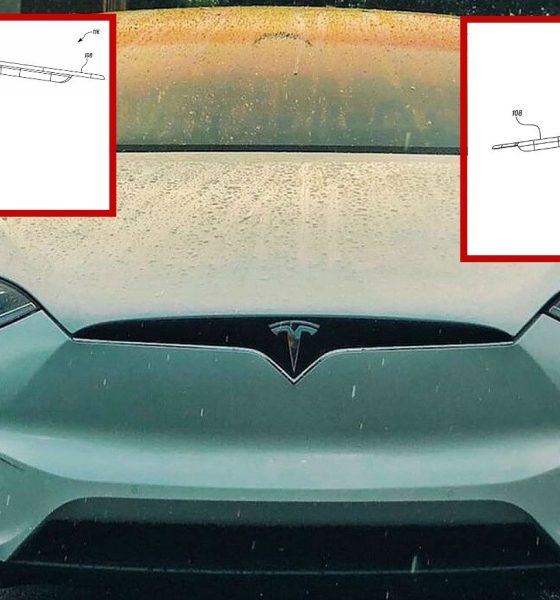
News
Tesla patents novel hood hinge that optimizes pedestrian safety during collisions
Tesla’s electric cars are known for being extremely quick, and they are also known for being extremely safe. The Model 3, the company’s most affordable car to date, for example, has aced safety ratings across the globe, earning a 5-Star rating from the NHTSA in the US, the Euro NCAP in Europe, and the ANCAP in Australia. Even the IIHS gave the Tesla Model 3 its highest rating, Top Safety Pick+.
But this is Tesla, and the electric car maker is known for being a company that refuses to stay still. Its cars are already quick enough to give passengers serious Gs while launching, yet the company remains hard at work on making them even quicker and more visceral in terms of speed (e.g. the Model S Plaid Powertrain). In the same light, while Teslas are already safe at their current state, it is no surprise that the company remains dedicated to finding ways to make its vehicles even safer, both for passengers in the cabin and for pedestrians on the road.
One such example of this was highlighted in a recently published patent that was simply titled “Hinge Assembly for a Vehicle Hood.” Based on the electric car maker’s discussion, the novel hinge assembly has the potential to protect pedestrians who happen to hit the vehicle’s hood during a collision. Similar systems are in place in vehicles today, though Tesla maintained that conventional designs have lots of areas for improvement.
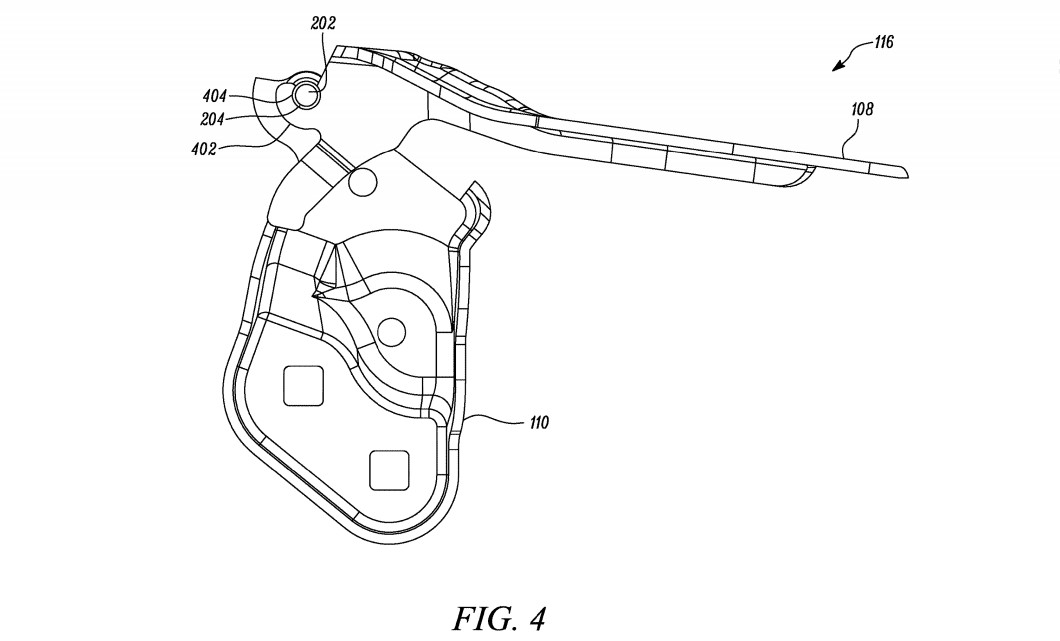
“Modern vehicles are mandated by safety standards to protect pedestrians from head-impact injuries, including a scenario in which a pedestrian would contact the vehicle’s hood. To meet these requirements. Current state of the art safety systems are active systems that typically include a sensor system to detect a collision with pedestrian and fire (using a pyrotechnic) an actuator to lift the front hood into a protective position before pedestrian impact. However, such systems may be falsely triggered and can only be used once because the pyrotechnic is not reversible. The pyrotechnic is also expensive, adding to overall cost of the vehicle. Therefore, there is a need for a safety system that overcomes the aforementioned drawbacks.”
Tesla noted in its patent’s description that its hinge assembly includes a body member and a hood member, with the latter being “pivotally coupled with a body member through a pivot pin.” In the event of a collision, a portion of the vehicle’s hood member or body member “deforms such that the hood member or body member disengages from the pivot pin.” This allows Tesla to use the hinge as a passive pedestrian safety system that does not require any additional components such as sensors or controllers. The design outlined in Tesla’s patent is also more practical than the pyrotechnic system used in conventional pedestrian impact safety systems.
Tesla describes how its hood hinge works in a collision in the following section.
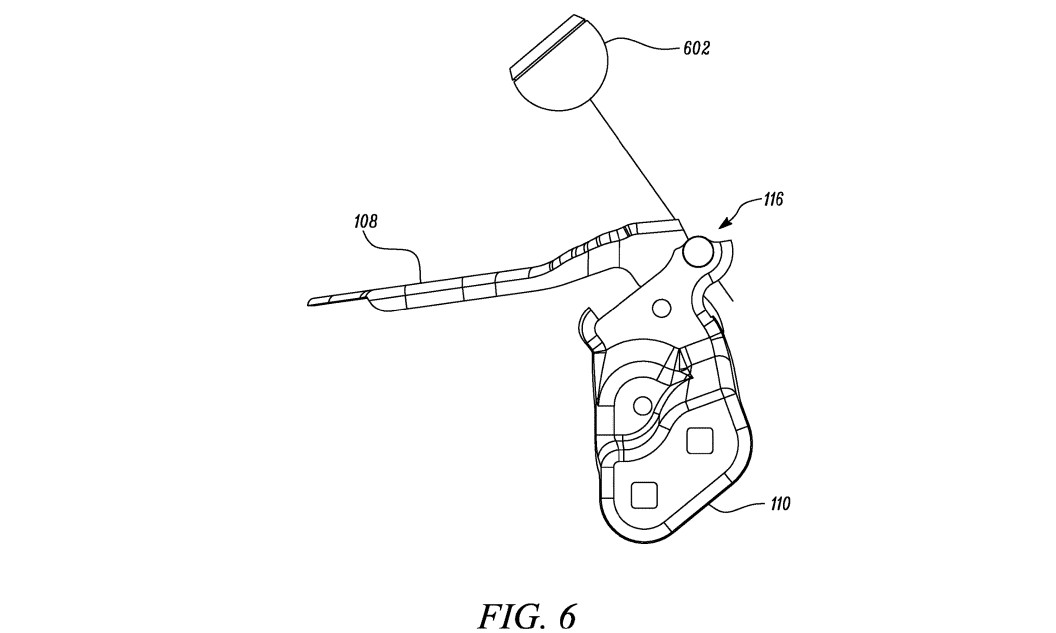
“FIG. 6 illustrates impact of a headform 602 on hinge assembly 116. Headform 602 represents the head (or portion thereof) of a pedestrian or other living being. As illustrated, when a collision occurs such that headform 602 hits a portion of hood member 108 of vehicle 100 along direction of an axis X-X′, a force is generated. When the force is great enough, the impact force causes hood member 108 to disengage from hinge assembly 116. The impact force typically causes deformation of portion 314 of hood member 108 adjacent to notch 312 such that pivot pin 202 disengages with second opening 304 of hood member 108. In embodiments, the width W of notch 312 is altered to change the impact force at which the hood member 108 disengages from hood member 108. In embodiments the impact force causes deformation of the pivot pin 202 to allow disengagement of hood member 108 from body member 110.
“In an event of collision, hood member 108 may disengage with hinge assembly 116 such that safety standards can be met. Hood member 108 may move down due to impact force and disengagement with hinge assembly 116. To allow movement of hood member 108, sufficient space may be provided by trimming away portions of hood member 108 and body member 110. Advantageously, this would lower weight of components while maintaining the safety standards for vehicle 100.”
Tesla is a carmaker that will likely never stay still. Despite its significant lead in the electric car segment thanks to its vehicles’ batteries and powertrain, Tesla is in a continuous process of improvement. The hood hinge outlined in this patent might be quite simple, but it contributes to the overall safety of Tesla’s lineup of vehicles nonetheless. Such initiatives, if any, further prove that when it comes to safety, no part is too small for innovation — and in the event of a collision, it’s these factors that can make all the difference.
Tesla’s patent for its hinge assembly could be accessed below.
Tesla Hood Patent by Simon Alvarez on Scribd

News
Tesla launches crazy Full Self-Driving free trial: here’s how you can get it
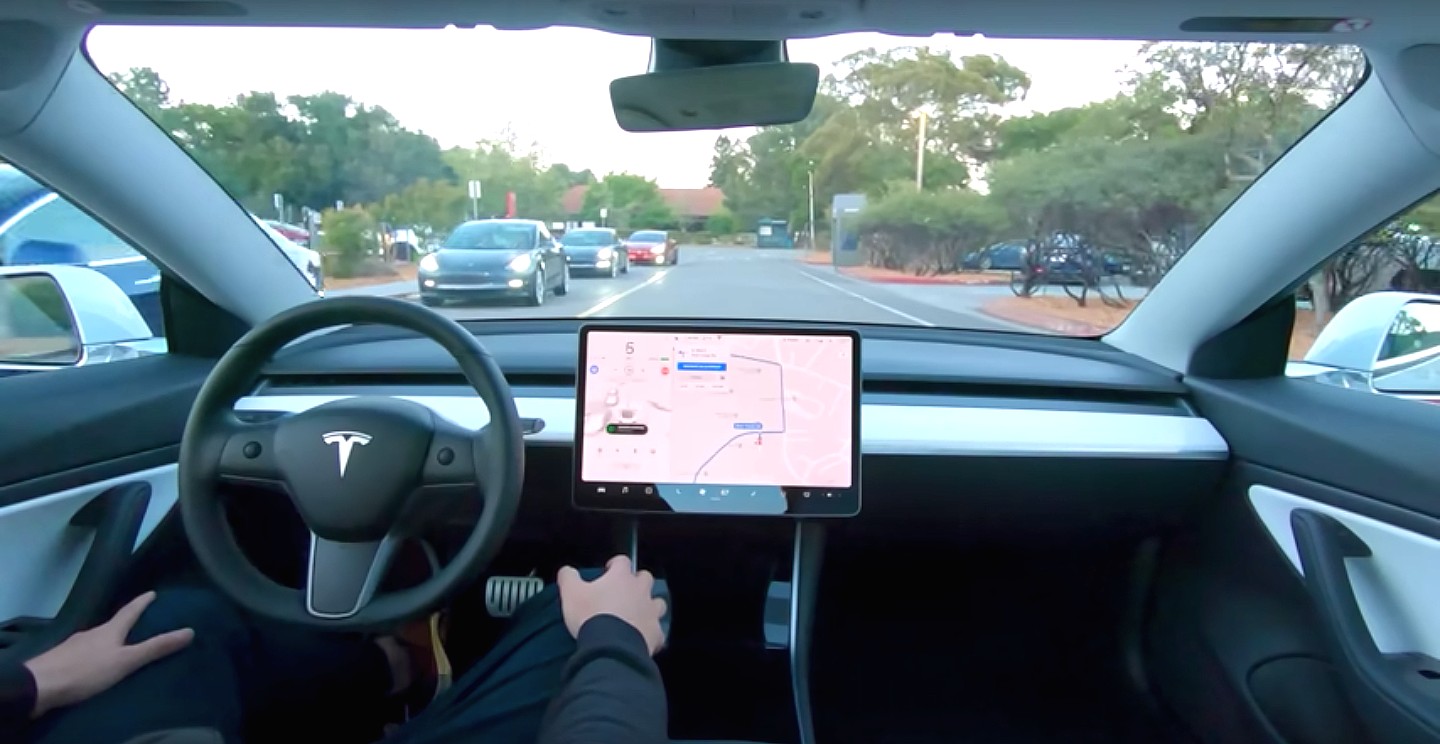
Tesla is launching a crazy Full Self-Driving free trial, which will enable owners who have not purchased the suite outright to try it for 30 days.
There are a handful of stipulations that will be needed in order for you to qualify for the free trial, which was announced on Thursday night.
Tesla said the trial is for v14, the company’s latest version of the Full Self-Driving suite, and will be available to new and existing Model S, Model 3, Model X, Model Y, and Cybertruck owners, who will have the opportunity to try the latest features, including Speed Profiles, Arrival Options, and other new upgrades.
🚨 Tesla is launching a free 30-day trial of Full Self-Driving in North America for owners.
It includes every model, but you need v14.2 or later, and you cannot have already purchased the suite outright. https://t.co/8CNmxxOkVl
— TESLARATI (@Teslarati) November 27, 2025
You must own one of the five Tesla models, have Full Self-Driving v14.2 or later, and have an eligible vehicle in the United States, Puerto Rico, Mexico, or Canada.
The company said it is a non-transferable trial, which is not redeemable for cash. Tesla is reaching out to owners via email to give them the opportunity to enable the Full Self-Driving trial.
Those who are subscribed to the monthly Full Self-Driving program are eligible, so they will essentially get a free month of the suite.
Once it is installed, the trial will begin, and the 30-day countdown will begin.
Tesla is making a major push to increase its Full Self-Driving take rate, as it revealed that about 12 percent of owners are users of the program during its recent earnings call.
Tesla CFO Vaibhav Taneja said during the call:
“We feel that as people experience the supervised FSD at scale, demand for our vehicles, like Elon said, would increase significantly. On the FSD adoption front, we’ve continued to see decent progress. However, note that the total paid FSD customer base is still small, around 12% of our current fleet.”
Earlier today, we reported on Tesla also launching a small-scale advertising campaign on X for the Full Self-Driving suite, hoping to increase adoption.
Tesla Full Self-Driving warrants huge switch-up on essential company strategy
It appears most people are pretty content with the subscription program. It costs just $99 a month, in comparison to the $8,000 fee it is for the outright purchase.
News
Tesla Full Self-Driving warrants huge switch-up on essential company strategy
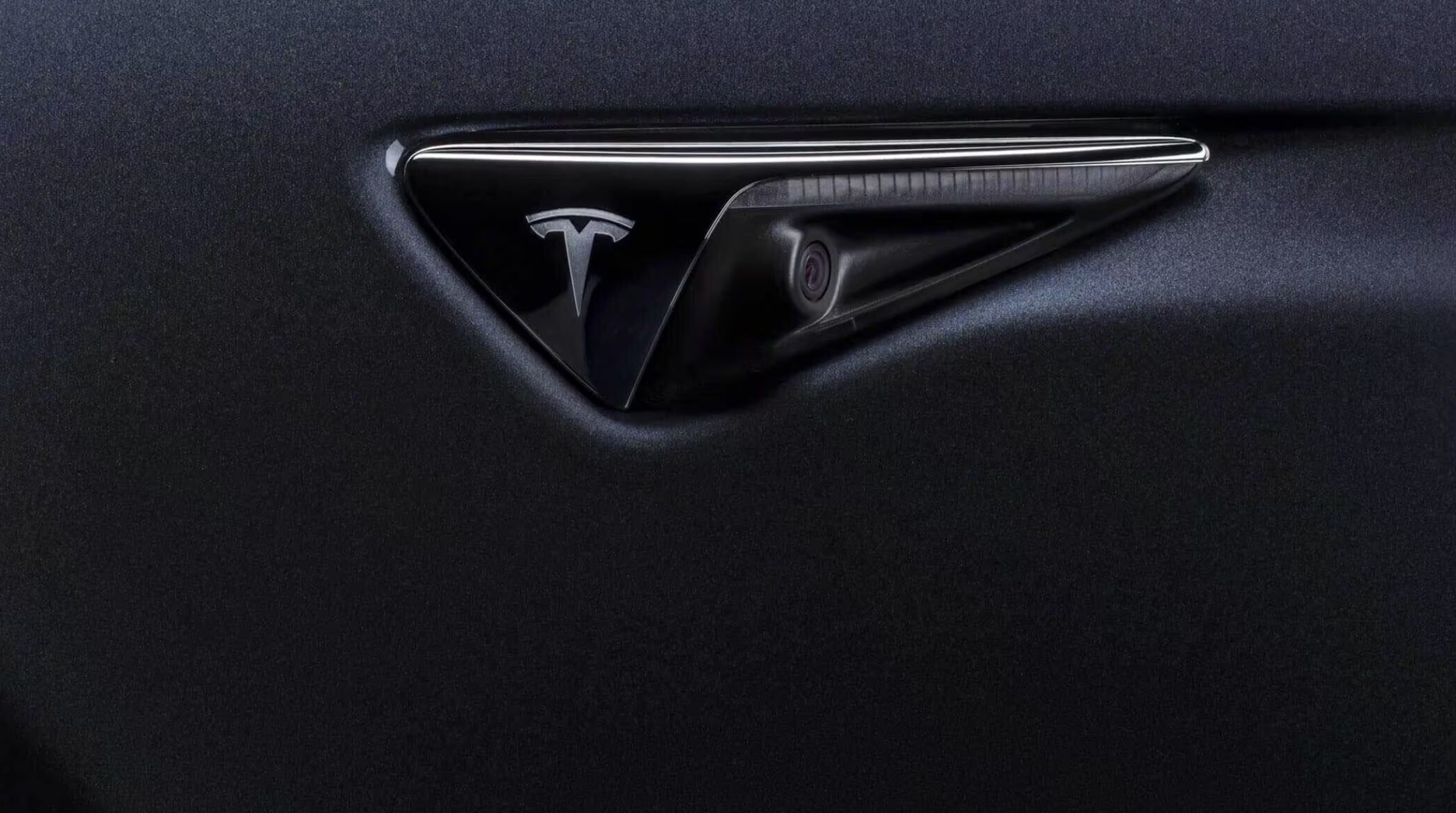
Tesla Full Self-Driving has warranted a huge switch-up on an essential company strategy as the automaker is hoping to increase the take rate of the ADAS suite.
Unlike other automotive companies, Tesla has long been an outlier, as it has famously ditched a traditional advertising strategy in favor of organic buzz, natural word-of-mouth through its production innovation, and utilizing CEO Elon Musk’s huge social media presence to push its products.
Tesla has taken the money that it would normally spend on advertising and utilized it for R&D purposes. For a long time, it yielded great results, and ironically, Tesla saw benefits from other EV makers running ads.
Tesla counters jab at lack of advertising with perfect response
However, in recent years, Tesla has decided to adjust this strategy, showing a need to expand beyond its core enthusiast base, which is large, but does not span over millions and millions as it would need to fend off global EV competitors, which have become more well-rounded and a better threat to the company.
In 2024 and 2025, Tesla started utilizing ads to spread knowledge about its products. This is continuing, as Full Self-Driving ads are now being spotted on social media platforms, most notably, X, which is owned by Musk:
NEWS: Tesla is running paid advertisements on X about FSD (Supervised). Here’s an ad they started running yesterday: pic.twitter.com/IHVywLMyTd
— Sawyer Merritt (@SawyerMerritt) November 25, 2025
Interestingly, Tesla’s strategy on FSD advertising is present in Musk’s new compensation package, as the eleventh tranche describes a goal of achieving 10 million active paid FSD subscriptions.
Full Self-Driving is truly Tesla’s primary focus moving forward, although it could be argued that it also has a special type of dedication toward its Optimus robot project. However, FSD will ultimately become the basis for the Robotaxi, which will enable autonomous ride-sharing across the globe as it is permitted in more locations.
Tesla has been adjusting its advertising strategy over the past couple of years, and it seems it is focused on more ways to spread awareness about its products. It will be interesting to see if the company will expand its spending even further, as it has yet to put on a commercial during live television.
We wouldn’t put it out of the question, at least not yet.
News
Tesla Model Y Standard: first impressions from a Premium owner
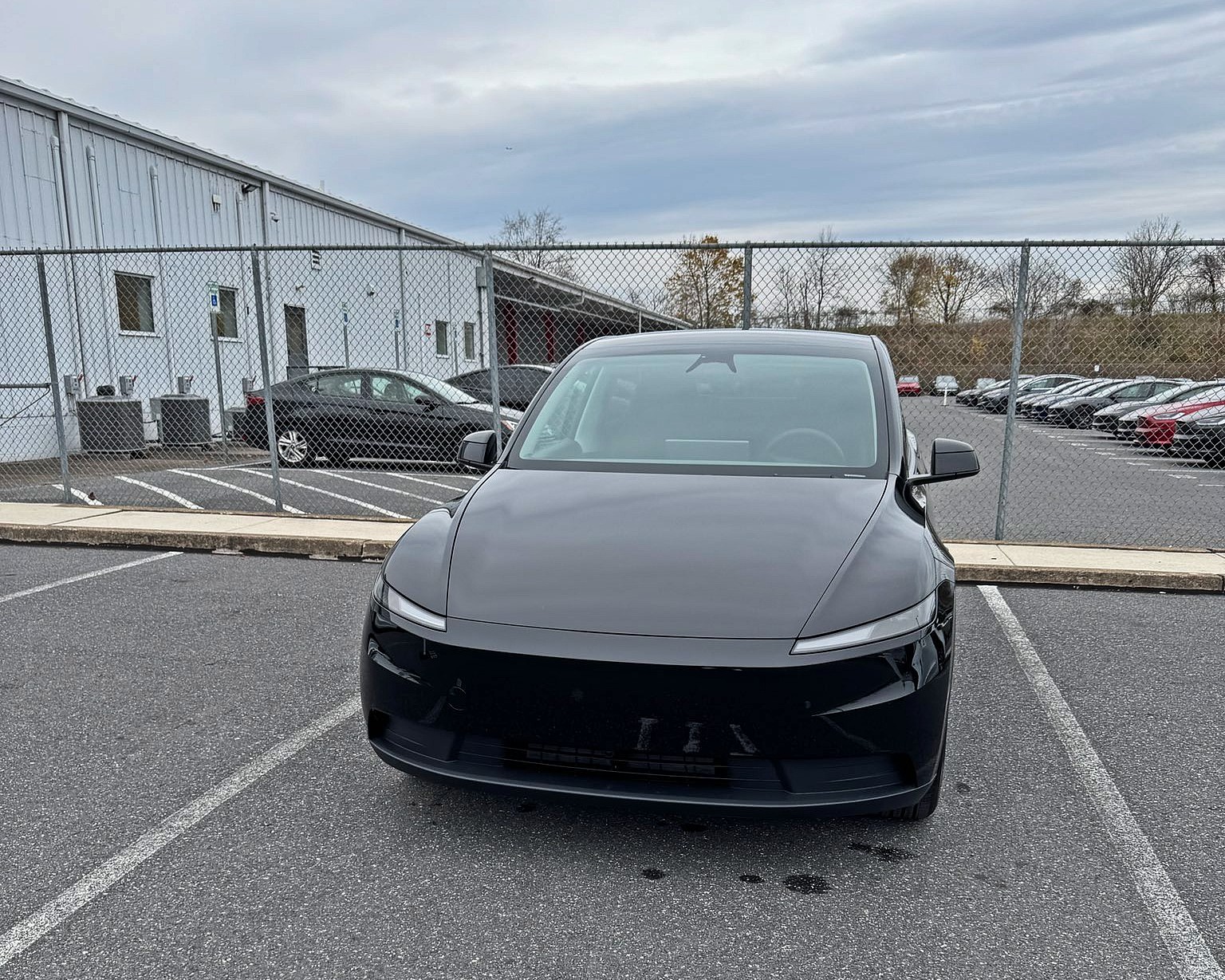
Tesla was nice enough to hook us up with the new Model Y “Standard” trim for a few days, and while we’ll be sure to fill you in on the full experience in the coming days, there are a lot of differences we noticed right off the bat, which make the ownership experience different from the “Premium” configuration level.
I purchased a Model Y Long Range All-Wheel-Drive back in August and took delivery just two weeks later. Through the first three months of owning my car, I’ve come to love so many things about the Tesla experience.
I traded my ICE vehicle for a Tesla Model Y: here’s how it went
However, I was interested in experiencing the affordable trim and seeing whether I would miss any of the voided features of the “Premium” Model Y.
Through the first 24 hours, here are my first impressions of the Model Y Standard as a Premium trim level owner:
Overall Aesthetic
The lack of a light bar is not something that is a dealbreaker. In fact, I would argue that the Model Y Standard’s more traditional headlight design is just as pleasing from an aesthetic standpoint.
The car is great looking from top to bottom; there are not a substantial number of differences besides the lack of a lightbar on both the front and the back of the car.
Overall, it is a very sleek vehicle, but the major changes are obviously with the interior.
Interior Changes
This is where the big differences are, and some of the things I’ve gotten used to in the Premium are not included. If I didn’t have a Premium Model Y already, I’m not sure I’d miss some of the things that are not present in the Standard trim, but I believe I’d get annoyed with it.
First impressions:
✅ Interior is excellent. I definitely miss the additional storage already that is available in my Premium. I could definitely get over it though
✅ Noticeable step down in sound system. Long Time by Boston absolutely cranks in the Premium; it’s still very… https://t.co/JNWvxTd8p1
— TESLARATI (@Teslarati) November 25, 2025
Storage
The Premium has a large storage compartment between the cupholders and the wireless charger, which is not present in the Standard trim. Instead, it is more like the Cybertruck, as there is a pass-through and floor storage.
I think that the pass-through is nice, but the additional storage is something I take advantage of, especially as someone who films Full Self-Driving videos, which requires hauling mounts, GoPros, and other accessories.
The sleekness of the Premium trim is also something I prefer; I really enjoy having the ability to close those compartments and cover the cupholders.
Obviously, this is a really trivial issue and not something that is substantially impactful from an ownership experience. If I weren’t already an owner, I am not sure I’d even have something to complain about.
Material Differences
The Premium trim seats are completely Vegan Leather, which I really do like, even as someone who doesn’t really love leather seats due to their temperature dependency.
The Standard trim features a Textile and Vegan hybrid, which has half of the seat a different material than the other.
The material is very similar to what I had in my previous car, a Bronco Sport. It was very durable, easy to clean, dried quickly, and hid a lot of things that leather does not, like oils from your skin, which constantly require attention to keep your interior looking fresh.
The wireless charger is also a different material, as the Premium features an Alcantara material on that. The Standard has a rubberized and textured backing, which looks good, too. They’re both more than suitable.
Other Missing Features
The Standard lacks a few minor things, most noticeably is the ambient lighting. The biggest change, however, and something I really miss, is the glass roof.
A lot of people told me that when I got my Model Y, I wouldn’t even notice the glass roof after a few weeks. That could not be further from the truth. I look out of it all the time, and it’s one of my family’s favorite parts of the car.
My Fiancè and I really love parking and watching Netflix when we pick food up, especially when it’s raining, because the glass roof gives such a great view.
We also loved it as Fall arrived, because it was great to look at the foliage.
Buy the Tesla.
Enjoy the glass roof. pic.twitter.com/r2GDyOEEWu
— TESLARATI (@Teslarati) October 28, 2025
Bigger Differences
There are also a handful of very noticeable differences from the overall cabin experience, especially with the sound system.
Much Weaker Sound System
The Model Y Standard has just 7 speakers and 1 amp, with no subwoofer. This is a significant step down from the 13-15 speakers in the Premium Long Range AWD Model Y, the 2 amps it comes with, and 1 subwoofer in the trunk.
I usually like to listen to Long Time by Boston to test out a sound system, and it was noticeably weaker in the Standard. It was missing a big portion of the umph that is provided by the Premium’s sound system.
Cabin Noise
It feels like the Cabin Noise is definitely more noticeable in the Standard, which is something I really love about my Model Y. It is able to dampen so much road noise from louder cars, and I don’t feel as if it is very quiet in the Standard.
This is perhaps the biggest make-or-break for me with this car. I truly have been spoiled by how quiet the cabin is in the Premium, and it’s due to the lack of acoustic-lined glass in the Standard.
I will be doing a more in-depth review of the Model Y Standard, especially with ride quality, later this week.









